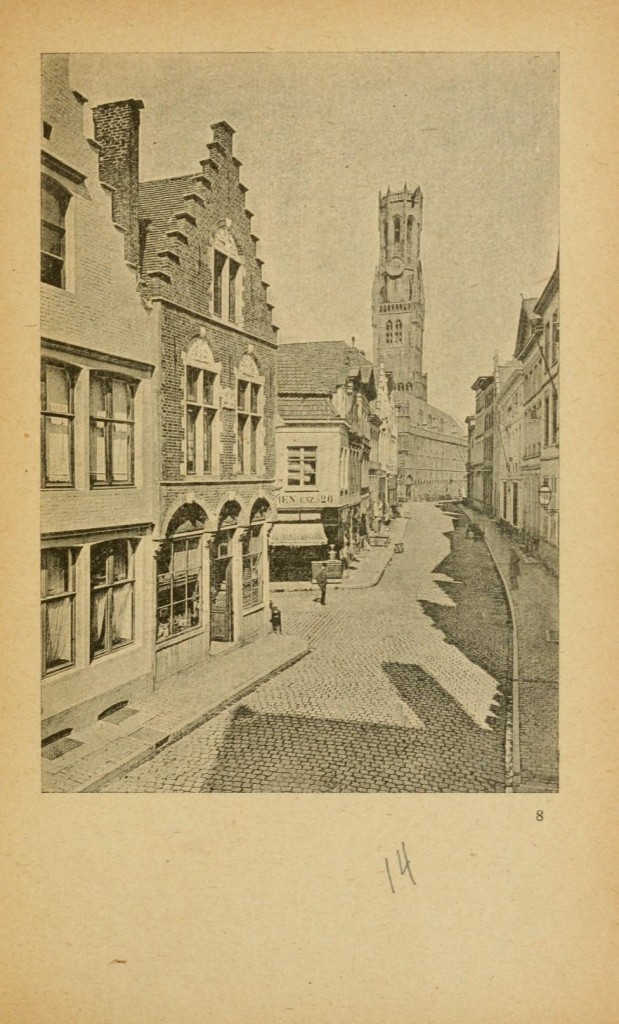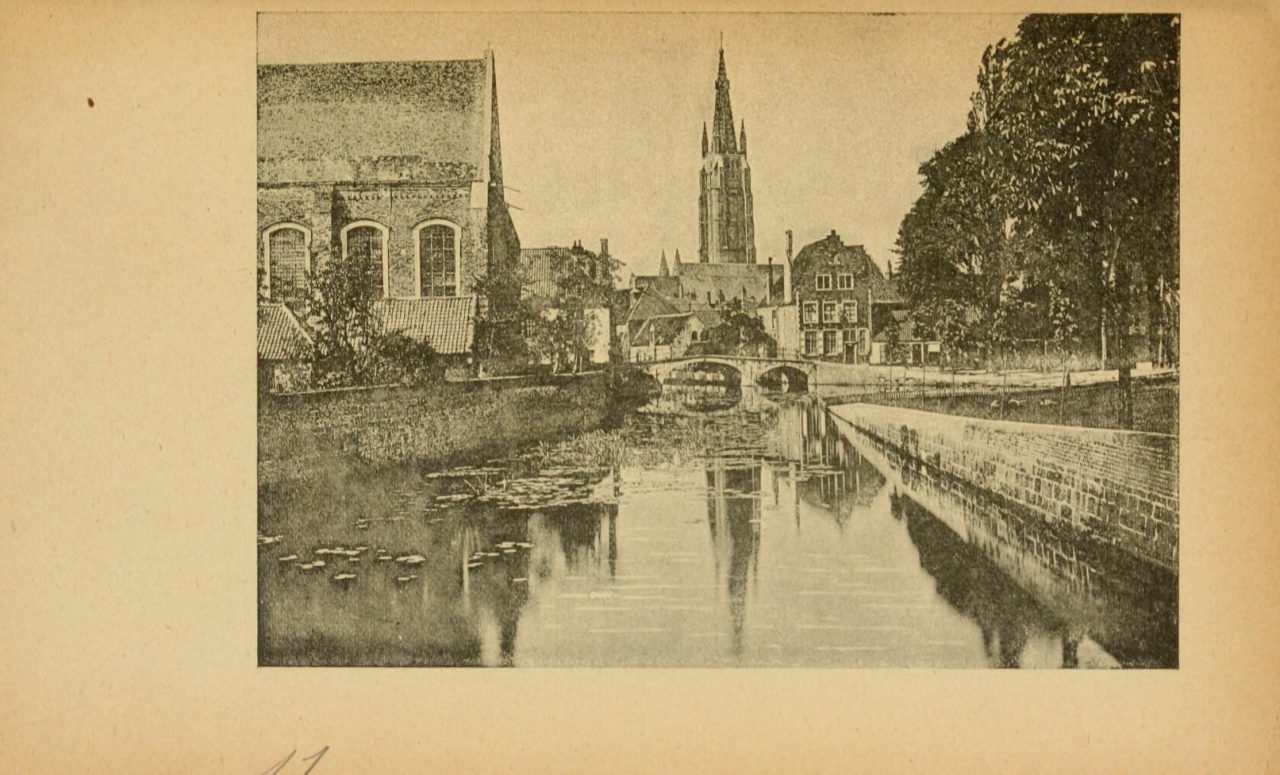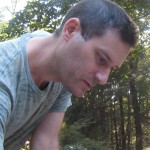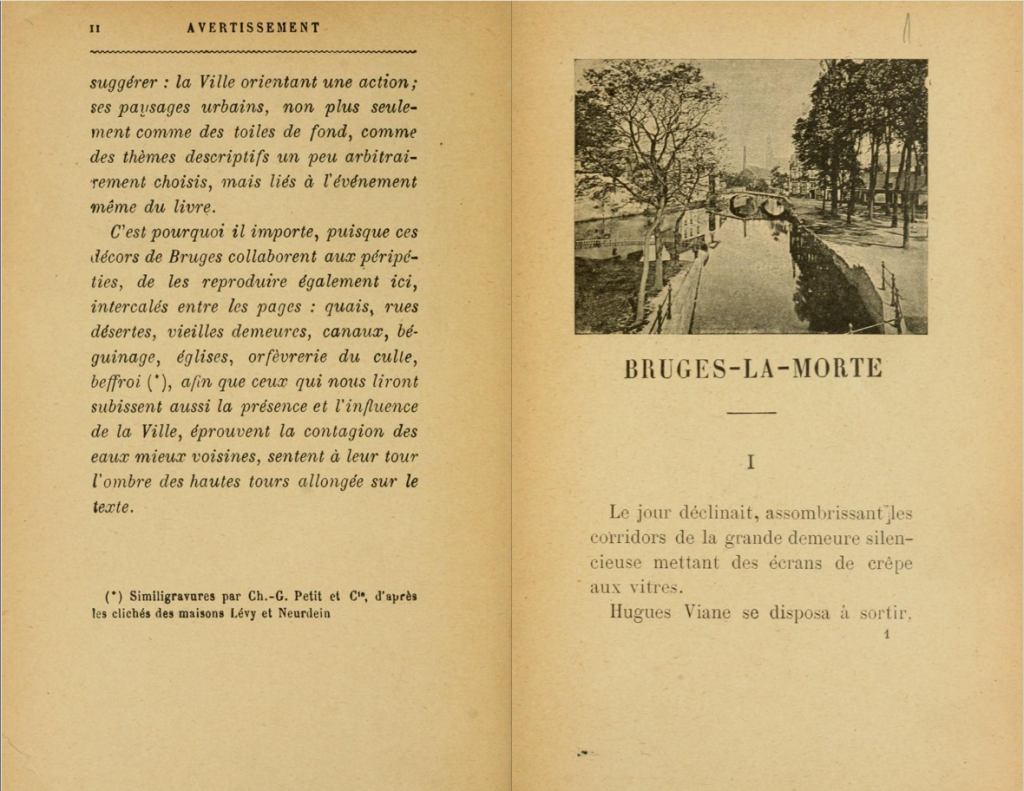Andrew Zornoza: “Mirrors in the City of the Dead”
When I began to write my first book, Where I Stay, I was trying to erase the memory of certain photographs that had followed me my whole life. I think everyone has objects like that — letters from lost friends, dried flowers, old keychains — these objects stay in some box at the back of a dusty drawer. After years of struggling with the form of the book, I decided to just paste these photographs into the novel. But putting photographs with text is problematic — it disrupts the suspension of disbelief that is critical to any viewing experience. I came to an uneasy peace with this disruption — and learned to work with the space between the photographs and the sentences. This was important to me, a type of absence. I couldn’t have articulated that back then: I was just a kid. I had never been to Paris. Rodenbach, I would have thought, a type of malt liquor; Levy-Dhurmer, a jeans store at the mall. But, now, even after I’ve long retired Where I Stay, I’ve been asked enough questions about it that I’ve gathered some tidbits on the small history of the form — the intersection of photography and poetry. So, when Poetry Northwest and the poet Andrew Zawacki asked me for my thoughts on the matter, I had already arranged my own narrative — one that bothers around the edges of the beginning, before Sontag and Barthes set all the rules. . .
It was in a fashion such as this that Doctor Faustus hungered after the magic mirror in which the celestial image of his beloved disclosed itself…
-Georges Rodenbach
In the west wing of the d’Orsay museum in Paris, past the Degas and Vuillard is a pastel portrait of a young man standing on a quay. The subject is Georges Rodenbach, the writer, and the painter of the portrait was Lucien Lévy-Dhurmer. Rodenbach stands still: he has striking pale gray eyes. The sky is gray: the bridges and churches behind the man are gray. The water is gray. Rodenbach’s eyes: two pale, gray mirrors. (Musée d’Orsay official website)
Mirrors appear frequently in Rodenbach’s most notable work, the hybrid photo-text Bruges-la-Morte. An early example of the symbolist movement, and serialized in Le Figaro from 1895 to 1896, Bruges-la-Morte tells the story of Hugues Viane, a man who begins to conflate his dead wife with the city that he lives in. Rodenbach included found photographs of the city along with this surreal narrative. It wasn’t the first time photographs had been juxtaposed with writing (the honor of that goes to Anna Atkins and British Algae: Cyanotype Impressions, published in 1844), but it was the first time that this new technology interfaced with poetic—not scientific—language.
Sun-pictures. That was the name given early calotypes and daguerreotypes we now call photography. At first, these images were difficult to explain. Who, exactly, drew them? Pioneers pointed at the heavens: the sun created the image. Of course, our modern era has given the camera that agency of creation; we equate tools with power.
But credit the sun, or Sony, it makes no difference: after this initial befuddlement (think Bach with an iPod), the medium of photography was quickly stamped into our collective consciousness with the distinct seal of objectivity. From Thich Quang
Duc to Abu Ghraib, photographs bear witness. Photographs memorialize impartially—they freeze the dead. In fact, the history of photography is littered with bodies.
This touch of the real and the touch of the really dead have always set literature and its focus on simulacra and resurrection ill at ease. Baudelaire famously railed against the new medium:
“Now the faithful says to himself: ‘Since photography gives us every guarantee of exactitude that we could desire (they really believe that, the mad fools!), then photography and Art are the same thing.’ From that moment our squalid society rushed, Narcissus to a man, to gaze at its trivial image on a scrap of metal. A madness, an extraordinary fanaticism took possession of all these new sun-worshippers…”
Photographs can strengthen one of the written word’s most traditional claims, to reference reality, but can also undermine this position, calling attention to the fictionality and subjectivity of literature. Highlighting the fragility of our inner inventions.
The little angles of ink we call words have to work quite hard at creating a world: a photograph does so instantly. Mixing photography with words is a little like a magician handing out little slips of folded paper that explain his magic trick. It shatters an illusion, for better or worse. If the trick is mediocre, it can save the day. If the trick is good, the explanation suffers in comparison.
To be clear, illustration and the written language have gotten along just fine: Doré’s macabre steelplate engraving of Poe’s “The Raven” and Blake’s watercolors for The Inferno come to mind. Baudelaire’s complaint is specific, it takes no umbrage at drawings or other modes of illustration: it sets photography aside as the enemy. And the difference between illustration and photography as a part of literature is both subtle and grand: the difference between collusion and collision.
The photograph adjacent to poetry is less a photograph than another optical marvel of light: the mirror. It is what the curator of the text desires to see in itself. And much the way our notion of identity and our actual image can differ, so can the picture and the story.
Baudelaire. Jealous. Afraid of his own reflection.
So, to talk about poetry and photography together, it is worth focusing on that small history of works that directly engage, rather than run away from this problem of reflection. Thomas Sayers Ellis’ Skin Inc., W.G. Sebald’s The Emigrants, Walter Benjamin’s Das Passagen-Werk, James Agee and Walker Evans’ Let Us Now Praise Famous Men. And last, that gray emissary of dissonance and metaphor: Rodenbach.
Rodenbach and his dead city.
The history of photography and poetry starts with him, in that gray seaside port, with the symbolists and their melancholic break from impressionism. The difference between those two camps is subtle but remains with us today: a fracture that led to the polyglot, mad embryo of modernism. The impressionists started with careful observation of the natural world and expressed the distilled feeling found there. The symbolists rejected not the techniques of impressionism but the direction of it. In reaction to the explosion of scientific explanations for natural phenomenon, the symbolists turned inward the outward gaze of impressionism. Symbolists started with the feeling: they sought to make the sublime real, to make the invisible, visible.
Rodenbach made his dead wife reappear in every nook and cranny of the city he called home.
Lévy-Dhurmer’s portrait of Rodenbach does not live in Bruges. It lives in Paris, on the fifth floor of the D’Orsay, a railway yard on the banks of the Seine converted to a museum. The portrait is not on the ground floor in the symbolist gallery, it is in a room largely filled with pastel works by impressionists. If you stare long enough at the painting, the face becomes disembodied. Further: Rodenbach rises straight out of the waterway.
This is no accident, it is technique: Dhurmer blended the pastels so that Rodenbach’s shoulders flow into the canal. Is this Rodenbach or Hugues Viane, the protagonist from Rodenbach’s book? The real and the imagined become one. Even more so, the painter never saw this city he painted: the backdrop was recreated from photographs. Just as in Rodenbach’s book. This is the legacy of Bruges-la-Morte: a panoply of doubleness, of allowing what we see and what we feel to be reflected in one another imperfectly. Imperfect, but sublime.
The boundary between real and imagined becomes fluid.
So there, at a museum in Paris, stuck in infinity is Georges Rodenbach with his striking pale eyes. His red hair reflected in the red rooftops, his eyes in the water, the city’s spires in his features. Every piece of himself mirrored in the gray city by the sea.
—
 Andrew Zornoza is the author of the photo-novel Where I Stay and the forthcoming How to Save the Universe. His short fiction, essays and photography have appeared in BOMB, the Poetry Foundation, Gastronomica, and CapGun, among many others. He teaches at Parsons School of Design and Mannes Conservatory of Music. Born in Houston, Texas, he currently lives in New York City.
Andrew Zornoza is the author of the photo-novel Where I Stay and the forthcoming How to Save the Universe. His short fiction, essays and photography have appeared in BOMB, the Poetry Foundation, Gastronomica, and CapGun, among many others. He teaches at Parsons School of Design and Mannes Conservatory of Music. Born in Houston, Texas, he currently lives in New York City.
—
This essay also appears as part of the “Film Roll” portfolio, guest edited by Andrew Zawacki in the Spring & Summer 2013 issue of Poetry Northwest.
—
All page images are in the public domain. (Archive.org)

